Mulgoa
J. W. Walker & Sons 1868 (1/3 mechanical)
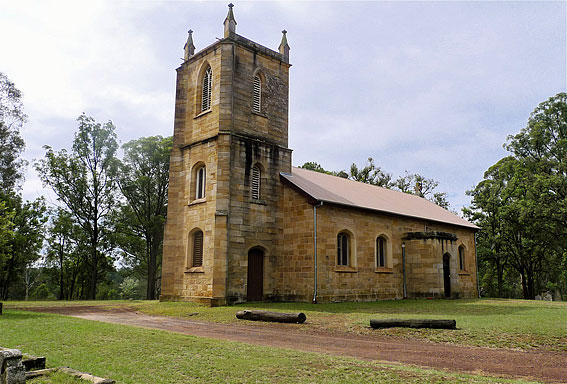
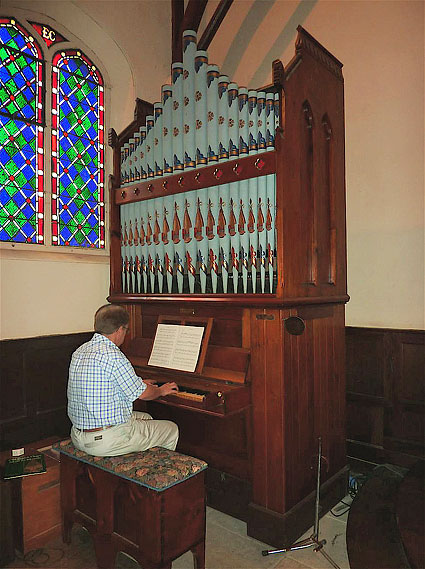
-
From the OHTA 2010 Conference book, Dr Kelvin Hastie writes:
The church site was originally granted to the Anglican Church in 1831 by William Cox to be used as a church and school. St Thomas' Church was built by James Atkinson and William Chisholm in 1836-1838 and designed by the Revd Thomas Makinson, the first incumbent. It is the only remaining example of a Gothic church in New South Wales built in the 1830s. It is sited on a hillside, north of the Mulgoa township, and is surrounded by a picturesque graveyard with clustered headstones and notable classical sandstone monuments, predominantly of the pastoralist Cox family which had homesteads in the area. The church is built in sandstone with a small tower at the west end capped by pinnacles and an open stone porch to the north. The five-bay interior has a hammer beam roof and includes furnishings of cedar (Toona Australis). The east window, filled with stained glass, has very simplified stone tracery in Perpendicular Gothic style. A rear gallery once housed the organ.i
The organ in St Thomas’, built in 1868 by J.W. Walker of London, is an intact miniature gem of an instrument, designed for only the most basic of service accompaniment. Like all small Walker organs of the period, it has provided constant reliable service for over 140 years. In 1973 it was renovated by Michael O’Dea (a one-time employee of Roger H. Pogson), but the extent of this work has not been documented.
The organ was documented by John Stiller during a visit on 10 March 1984. He made the following comments about the organ’s historic significance and comparative importance:
“This instrument is an extremely fine example of a J.W. Walker organ, since it has survived in such a remarkably pure state of preservation. The small and delicate sounds of this organ are indicative of the nineteenth-century tonal ideals regarding small organ design. The historic value of this organ is enhanced by:
1. A simple case design enlivened by ornately decorated display pipes.
2. The presence of original console fittings, such as stop heads, stop labels, keyboard, keyboard cheeks, nameplate of builder, swell-shutter control, an unusual bench and telltale.
3. The retention of double-rise bellows and an intact hand-blowing apparatus (plus provision for a foot-blowing pedal to be operated by the performer).
4. Preservation of the original mechanical key and stop actions.
5. The presence of all original pipework with the cone-tuning of the open metal pipes retained.” ii
- The specification of the organ is:
-
| Manual (enclosed) Open Diapason Stop’d Diapason Treble Stop’d Diapason Bass Flute |
|
* * + |
- Mechanical action
-
- Manual compass 56 notes
-
- Hitch-down Swell pedal
-
- Number of pipes = 159
-
- Pitch a = 438.4 at 21º C
-
- Wind pressure = 73 mm (2-7/8”)
-
- * 47 pipes A – g3
- + 9 pipes C – G#
-
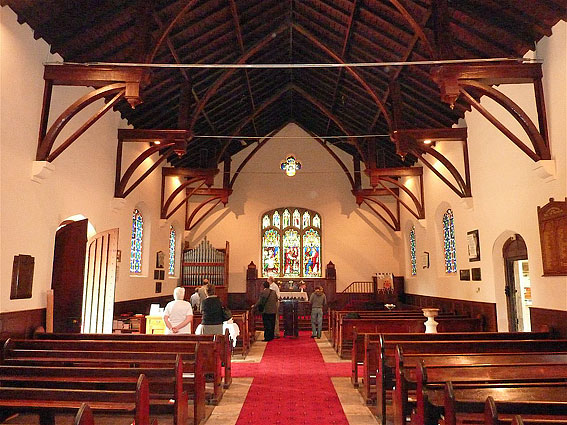
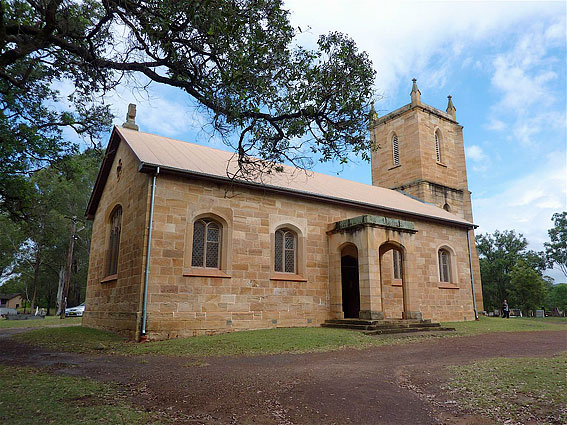

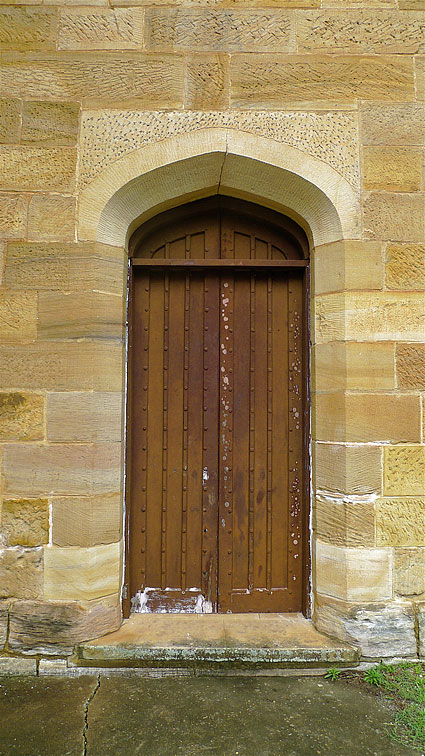
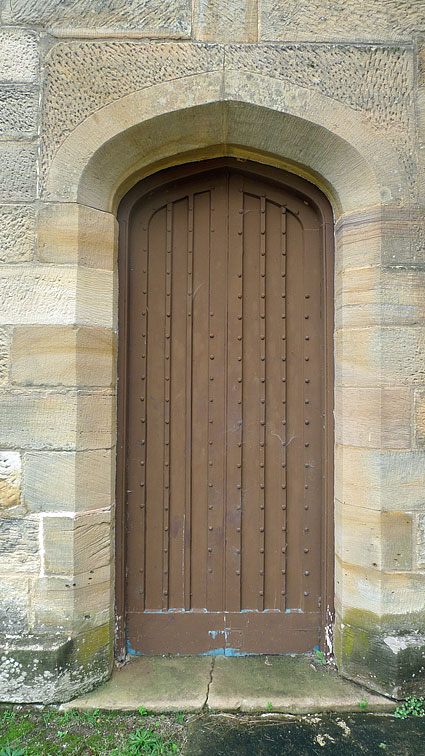
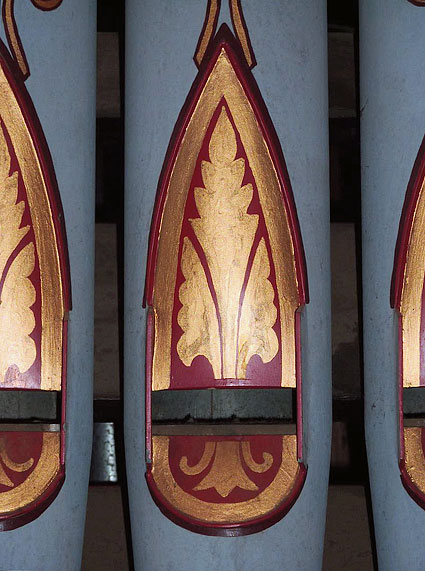
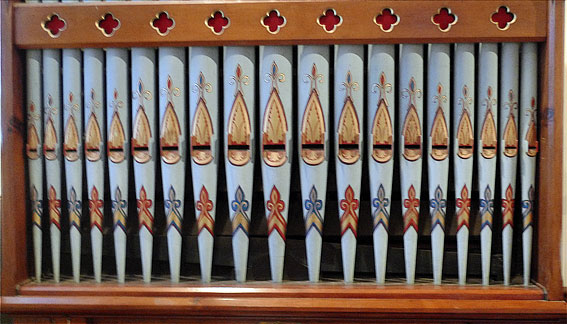
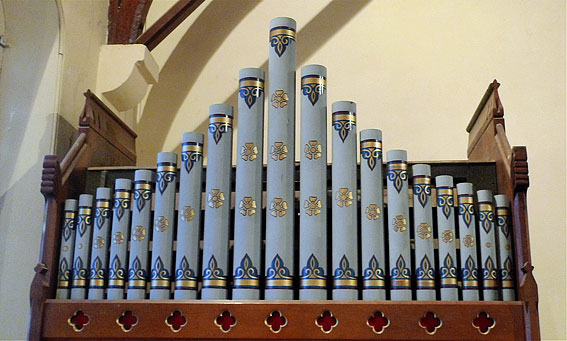
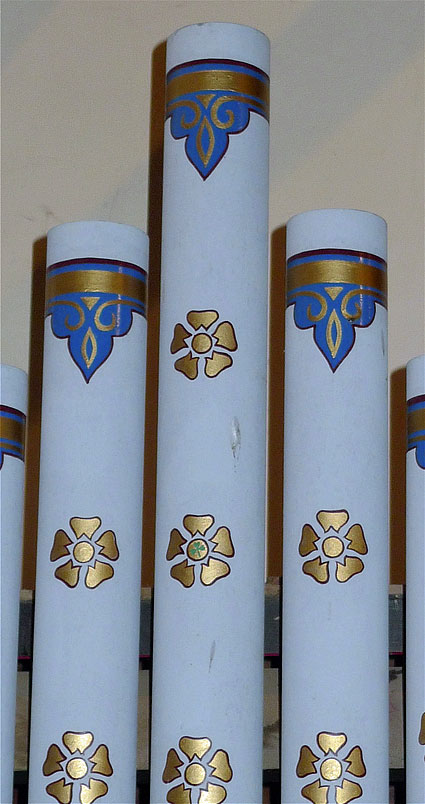
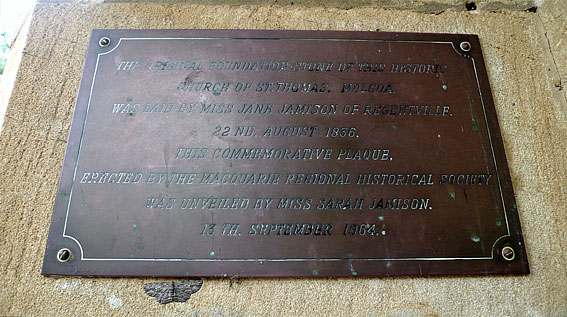
Photos: Trevor Bunning April 2010
i 1.Architectural notes provided by John Maidment, January 2010.
iiJohn Stiller, “St Thomas’ Anglican Church, Mulgoa NSW. Documentation of Pipe Organ built by J.W. Walker 1868”. Organ Historical Trust of Australia, 10 March 1984, 2-3.